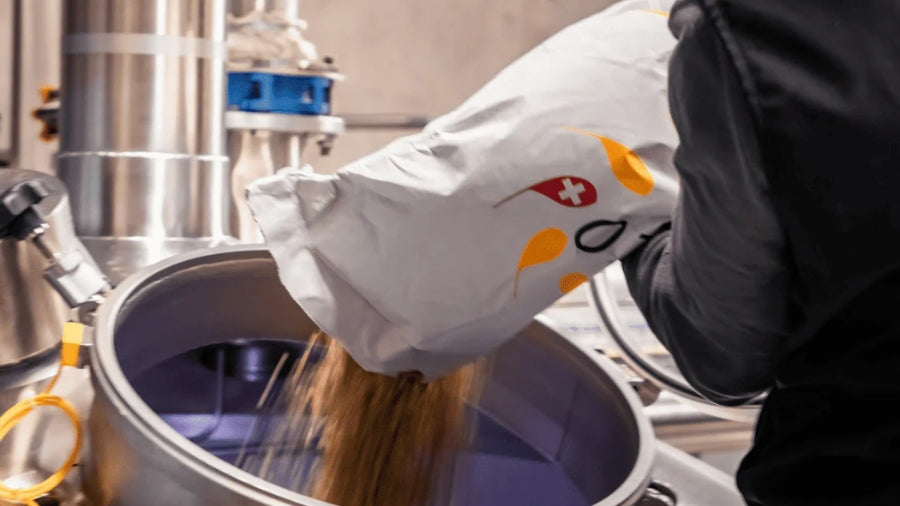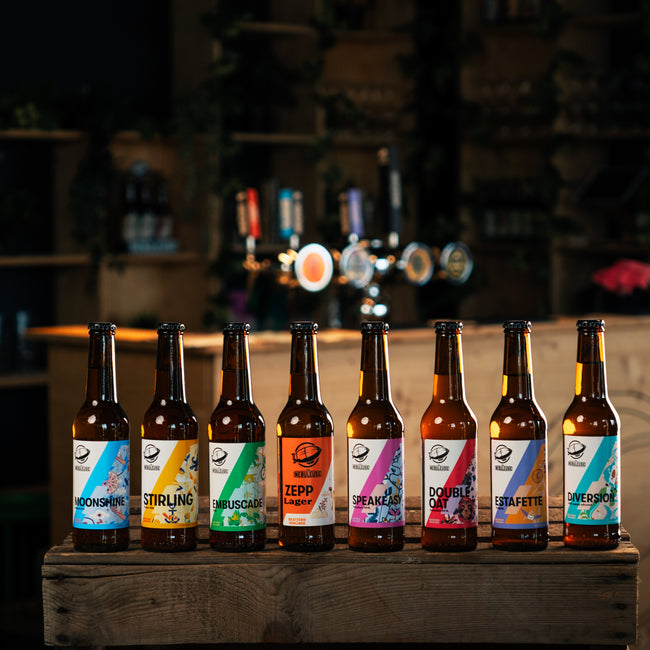Malt in Craft Beer: A Story of Flavors

Hops are often talked about with their exotic notes, but the true architect of our beers remains malt. While each fundamental ingredient plays a specific role in the balance of a beer , malt stands out as the central pillar of any brewing creation. This transformed cereal, which has defined the DNA of each beer since its beginnings, deserves our attention. The primary source of fermentable sugars and the mastermind of fundamental flavors, malt determines the character of each beer, from the lightest to the most full-bodied. An ingredient so crucial that it influences up to 80% of the final taste profile of a beer, while contributing to its texture, color and stability.
Malting, a precise process with multiple facets
Barley processing: a millimetric science
Malting transforms raw barley into a sophisticated brewing ingredient. The process begins with steeping, increasing the grain's moisture content from 12% to 45%. This crucial phase triggers a series of complex biochemical changes within the grain. The temperature and duration of steeping are meticulously controlled to ensure optimal germination without compromising grain quality.
The germination that follows represents a true biochemical metamorphosis. Enzymes, true molecular tools, break down starch into simple sugars and transform proteins into amino acids. This step profoundly modifies the internal structure of the grain, preparing it to release its sugars during brewing. Controlling humidity and temperature during this phase is crucial: too much humidity would encourage mold growth, while too little would limit enzyme activity.
Stirling , a gluten-free Pale Ale , perfectly illustrates the importance of this precision. Its blend of Pale Ale and Caramünch malts creates a balance between biscuity notes and hints of caramel, enhanced by the citrus notes of the hops. This beer demonstrates how careful malt selection allows for a complex flavor profile while remaining accessible, even for gluten-free beer lovers.
Kilning: the art of controlled cooking
Kilning, the final stage of malting, forges the character of the malt through carefully controlled drying. This critical phase determines not only the aromatic characteristics of the malt, but also its enzymatic potential and final color.
Below 85°C, we preserve the enzymatic activity for clear malts, essential for the production of light and refreshing beers. Zepp , our Craft Lager, takes advantage of this delicacy: its Pilsener and Carapils malts create a subtle and balanced base, allowing the expression of floral notes reminiscent of a spring bouquet. Similarly, Moonshine , our white beer, uses these clear malts to develop a silky texture and thirst-quenching freshness.
Between 85°C and 100°C , bread and biscuit notes develop , thanks to Maillard reactions. These complex reactions between amino acids and sugars create hundreds of different aromatic compounds, each contributing to the richness of the malt's flavor. The exact time and temperature determine the intensity of these aromas, allowing maltsters to create precise profiles for each type of malt.
Above 100°C, caramelization comes into play. This process transforms simple sugars into more complex compounds, developing aromas ranging from light caramel to intense toffee. Higher temperatures, up to 230°C, produce heavily roasted malts with intense aromas of coffee and dark chocolate. These malts are particularly important in dark beers such as stouts and porters.
Special malts: ingredients with multiple personalities
From light malts to roasted malts: the range of possibilities
Specialty malts are the brewer's spices, each bringing its own unique signature. Caramel malts develop notes ranging from candied fruit to toffee depending on their degree of toasting, creating an aromatic complexity essential in many craft beers. Chocolate malts offer aromas of freshly roasted cocoa, while biscuit malts bring notes of freshly baked pastries. This diversity allows brewers to create precise and complex flavor profiles.
Our Double Oat is living proof. This complex Double IPA expertly blends Pale Ale and Pilsner malts to create a solid base, enriched by the addition of oats, which provides a distinctive silky texture. Oat flakes, processed differently from traditional malts, contribute not only to the texture but also to the flavor profile, with their distinctive cereal notes that blend perfectly with the tropical aromas of Mosaic hops.
Assembly: a balancing act
Blending malts requires meticulous precision and a deep understanding of their interactions. Each gram influences not only the flavors, but also the texture, color, and head retention. Base malts are the backbone of the recipe , providing the fermentable sugars needed for fermentation and defining the fundamental character of the beer.
This base is then enriched with specialty malts, used in smaller but crucial proportions. Their careful dosage can make the difference between a balanced beer and an unbalanced creation. An excess of heavily roasted malts can quickly dominate the flavor profile, while an insufficient proportion of caramel malts can leave a beer lacking depth.
Our signature IPA, L'Ambuscade , perfectly demonstrates this art of blending. The Pale Ale malt forms the solid base, the Munich brings a subtle malty richness, while the Caramünch adds a hint of caramel that perfectly balances the bitterness and citrus notes of the generous hopping. This precise combination creates a remarkably balanced 6.4% IPA, where the malts support and complement the hop character without ever masking it.
Malting innovations: a world in motion
Malting continues to evolve thanks to technological advances. Modern malting techniques allow unprecedented control over the process, producing malts with precise and consistent enzymatic properties. Real-time spectrometric analyses monitor grain changes during germination, while automated control systems maintain optimal conditions throughout the process.
Malting barley varieties are also undergoing continuous innovation. Breeders are developing varieties with higher extract yields, optimal protein content, and more uniform malting modification. These improved characteristics allow maltsters to produce higher-performing malts with more precise flavor profiles.
Sensory analysis plays an increasing role in the development of new malts. Professional tasting panels systematically evaluate the organoleptic characteristics of malts, enabling malt houses to develop products that precisely meet the expectations of craft brewers. This scientific approach to sensory analysis contributes to innovation while maintaining consistent flavor profiles.
Craft malt houses are also experimenting with different grains, from rye and oats to wheat and even more exotic grains. This diversification is enriching brewers' palettes and opening the door to new flavor expressions. Our Double Trouble , a bold Double IPA , illustrates how these innovations create unique beers: its Pilsener malt base is complemented by Munich malt and sugar, creating a perfect backdrop for its explosive tropical notes of mango and papaya.
Conclusion
This perpetual quest for new flavors remains at the heart of craft beer. Mastery of malts, their meticulous selection, and precise blending define the difference between an ordinary beer and a memorable creation. A subtle art that continues to evolve, allowing brewers to push the boundaries of what's possible while respecting the fundamentals of age-old expertise.
The future of malting promises to be as exciting as its rich history. Technological innovations, combined with an ever-increasing understanding of the biochemical processes involved, are opening the door to new expressive possibilities for craft brewers. This ongoing evolution ensures that the world of craft beer will continue to surprise and delight beer lovers.









